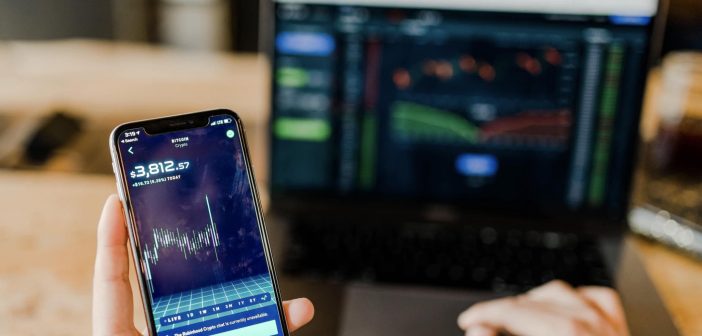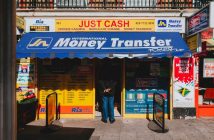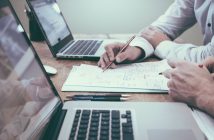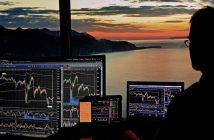Many traders have seen the potential of the Forex market. If you think it’s your turn, to begin with Forex trading, you need to learn the basics through familiarity with the market, capital, and other techniques. Once you’ve practiced and got a hold of how Forex works, you’re all set to become a successful trader. But first, let’s cover a few essentials.
What Is Forex Trading?
The principle behind Forex can be explained with buyers and sellers who convert currency between each other and arrive at an agreed price. These transactions are usually done for practicality, but most use them to earn a profit.
Forex is one of the most traded markets worldwide, with average daily trading reaching $6.6 trillion. With a large number of currency exchanges, the price movements become more volatile. This volatility allows for high profits but also increases risks.
Some investors have reservations when it comes to Forex trading because of how complicated the market can be. However, with the promise of high profits and portfolio diversification, many still join. Forex trading, similar to other assets trading, needs constant learning, commitment, and self-control.
Learning the Forex Language
Knowing the basic terminologies used in Forex trading is a stepping stone to learning how it works. Here are some of the terms you need to know:
Forex Pair
A Forex pair is the price of the exchange rate between two currencies. The first listed is the base currency with the buying price, and the second is the quote currency with the selling price. They are usually written with a slash (/), like EUR/USD or GBP/USD.
Spread
A spread is a difference between the buy and sell prices of a Forex pair. Just like in trading markets, you’ll have two options between available prices. If you’re a long-term trader, you opt for a slightly higher buy price than the market price. If you’re a short-term trader, you can choose the selling price below the market price.
Lot
Lots are the standardized collection of currencies in Forex trading. A standard lot is 100,000 units of the base currency.
Leverage
Since most traders don’t have 100,000 of the base currency, Forex trading is leveraged. But, what does leverage mean?
Leverage opens the opportunity to trade in large amounts through lending from a broker by putting down a small deposit. When you can close a leveraged position, your profit or loss is based on the leveraged amount.
Although you can have large profits with leverage, the risk also increases. If you ever lose, the amount is also significant. So, when you’re into leveraged trading, ensure to manage the risks.
Margin
As mentioned above, in leverage trading, you have a small deposit to make. This deposit is known as the margin. There are requirements in maintaining the amount of margin depending on your broker and how large you will trade.
Margin is usually expressed as a percentage of the full size of the trade. For example, trade on EUR/USD will require a margin of 2% of the total leverage value. You’ll need to deposit US$2,000 to trade with US$100,000.
Pips
Pips are the units of measurement for a movement in a Forex pair. If the fourth decimal of a Forex pair moves one digit, it’s equivalent to a pip.
For example:
- Current EUR/USD: US$ 1.00012 / US$ 1.17233
- One pip movement: US$ 1.00022 / US$ 1.17243
Steps to Start Forex Trading
Here are the steps you can do to start Forex trading:
1. Research About Forex Trading
Being familiar with the basic terms of Forex trading isn’t enough. You’ll need to learn about different markets, the base and quote currencies, the factors that move them, and more. The key to properly managing and understanding the market is to study it constantly. There are several established sites on trading that you can check online as your starting point.
2. Create Your Brokerage Account
To start Forex trading, you need to have a brokerage account. See forex brokers in Singapore. The account allows you to buy and sell foreign exchanges, among other assets. Money in a brokerage account is safe and secured by the Securities Investor Protection Corporation (SIPC).
3. Have a Good Trading Strategy
Know how much you’re willing to trade and be well informed of the risks associated with it. Testing the market will help you mold your strategy in how to deal with its volatility. Losses you incur can be charged to experience while profits should be handled accordingly.
4. Check Your Positions
After a trading day, it’s good to check your positions to know your daily accounting of trades. With this information, you can check pending transactions and your balances for future trading.
5. Don’t Get Carried Away
As first-time traders, you can get overwhelmed by the profits or even the losses. You need to practice not being swayed by your emotions leading to illogical decisions. Learn to close positions if it’s the best thing to do.
Conclusion
Exploring different trading options that can earn you profit is exciting. At the same time, starting with a new market can be tricky, but you’ll get familiar with and have your strategies through continuous learning and practice.





2 Comments
Thank you for the tips. Great information. Concrete Modesto
Some investors have reservations when it comes to Forex trading because of how complicated the market can be. However, with the promise of high profits and portfolio diversification, many still join. Forex trading, similar to other assets trading, needs constant learning, commitment, and self-control. You might check this forex risk management companies list from Fazzaco as a good start.